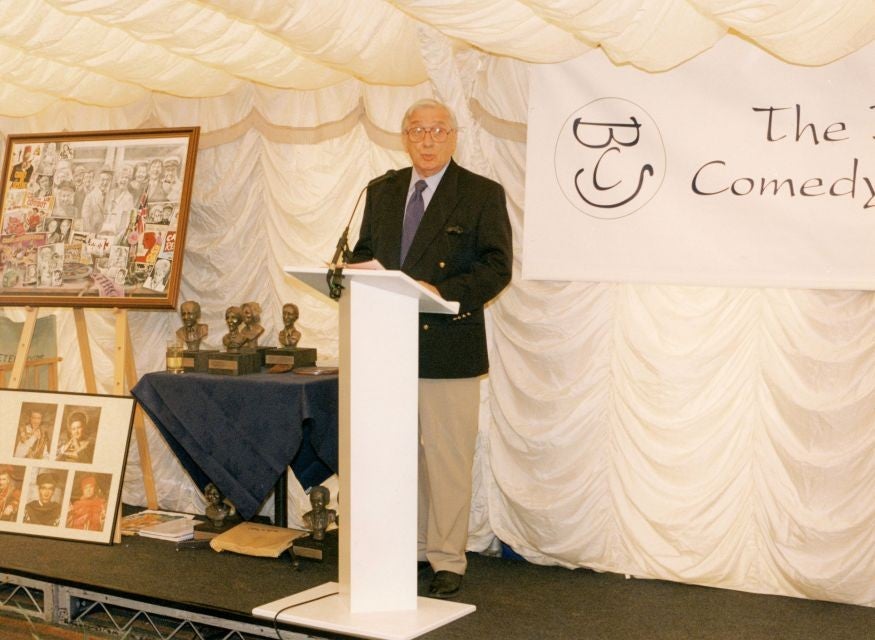Norman Hudis: Writer of the first six Carry On films who went on to pen episodes of such classics as The Saint and Hawaii Five-O
Hudis's scripts included sincere romantic subplots, and a sense of community among the mischief-makers

Film history tends to acknowledge Norman Hudis as the screenwriter of the first six films in the Carry On series, from 1958 to 1962, establishing the template of the British institution. But these entries weren't quite in keeping with the franchise's reputation. Made in black and white (with one exception), Hudis's scripts did not feature historical settings, or characters named after bodily parts or the series' actors – all of that came with his successor, Talbot Rothwell.
What Hudis's scripts did include were sincere romantic subplots, and a sense of community among the mischief-makers. And the Carry Ons were not really representative of Hudis's career, his adaptability as a screenwriter being given free reign by American episodic television, ranging from thrillers and medical dramas to a Biblical adaptation.
Born in Stepney in East London, Hudis's family were Jewish immigrants. His mother was Polly (nee Reuben), and his father, Isaac, commonly known as Jack, was a tailor. Attaining "an appalling academic record" at Betts Street School, he got his first job in 1938, on the Hampstead and Highgate Express.
In 1940, on his 18th birthday, he volunteered for the RAF, serving in Britain and in the Middle East for five-and-a-half years. Viewing sergeants as big brothers, he would later draw on wartime camaraderie for Carry On Sergeant (1958). Upon demob, he worked in the publicity arm of the Rank Organisation, initially as a "picture plugger", then at Islington, Denham and Pinewood studios.
His first play, Here Is the News, presented by the Under Thirty Theatre Group at Leatherhead in 1952, was set in a totalitarian country. Two years later, the same outfit staged his The Powder Magazine at Hythe Summer Theatre. There was a BBC television version in 1955; Hudis recalled that of his £75 fee, he spent £40 of it on a celebratory party.
Notable deaths in 2016
Show all 42After "two years of enthusiastic but unfilmed scripting" under a Rank contract, he freelanced with a deluge of monochrome B-movies, "usually a hearty thriller, [made in] three weeks tops". One such, The Flying Scot (1957) was for producer Peter Rogers, who had been a Rank writer during Hudis's publicist days, and reused him on the hastily shot The Tommy Steele Story (1957). Another Steele vehicle for Rogers, The Duke Wore Jeans (1958), teamed Hudis with the other half of the Carry On partnership, director Gerald Thomas.
Hudis admitted writing Carry On Nurse (1959) in 10 days, but "so many of the film's gags" had "Ritauthenticity", having been recalled by his wife, Rita, a nurse from Northern Ireland. They met at a Christmas show, during which "a piece of scenery fell on [her] shoulder; and I fell for that shoulder and everything attached." They were married for nearly 60 years. Carry On Teacher (1959), Carry On Constable (1960), Carry On Regardless (1961) and Carry On Cruising (1962) followed – but the Rita-approved Nurse, the second in the series, probably remains Hudis's most fondly remembered contribution to the series.
Again for Rogers and Thomas, and recognisably in the Carry On mode, Hudis wrote Please Turn Over (1959), intended to launch Margaret Lockwood's daughter, Julia, Nurse on Wheels (1963), and a retread of Carry On Nurse, Twice Round the Daffodils (1962), starring Donald Sinden and Kenneth Williams.
Hudis remembered that at that time, Williams was "prone to say earnest things such as: 'The actor's job is to interpret the writer's intention.' That didn't last long." Our House (1960-62), created by Hudis, was an ITV sitcom with Hattie Jacques, Joan Sims and Hawtrey as ill-matched lodgers. For producers Monty Berman and Robert S. Baker, for whom he had written six B-movies, Hudis furnished episodes of The Saint (1964-65) and Gideon's Way (1965-66).
He wrote the last two episodes of Danger Man, edited together and released in cinemas outside Britain as Koroshi (1968). Making the move "from Pine to Holly", four of his six segments of The Man from U.N.C.L.E. (1967-68), were two-parters shown as features in countries including the UK. The Karate Killers (1967) involved Terry-Thomas as a London bobby embarrassed by flirtatious Jill Ireland, while How to Steal the World (1968) was actually the series' conclusion.
Hawaii Five-O, Cannon and CHiPs were all grist to Hudis's mill. He was pleased when an episode of Marcus Welby, M.D. (1969-76), concerning a patient with a brain disorder, helped a real-life Canadian sufferer.
The Story of Esther (ABC, 1979), was intended as a 90-minute opener to a series of Bible stories; the result was cut to an hour, and no series resulted.
As a firm supporter of the Writers' Guild of America, Hudis was picket captain outside the headquarters of CBS during the writers' strike of 1988. In 1965, when a letter to The Stage criticised Equity protests against apartheid, he replied, "Britain and America are doing something about the complex racial problem. In South Africa, prejudice is written into the law of the land. That is the vital difference – and it makes protests from our type of country not only justifiable but morally essential."
Last year, Hudis appeared on Carry On Forever, an ITV celebration. Rita and his two sons survive him.
Norman Hudis, writer: born Stepney, London 27 July 1922; married 1956 Marguerita Robinson (two sons); died California 8 February 2016.
Subscribe to Independent Premium to bookmark this article
Want to bookmark your favourite articles and stories to read or reference later? Start your Independent Premium subscription today.




Join our commenting forum
Join thought-provoking conversations, follow other Independent readers and see their replies
Comments